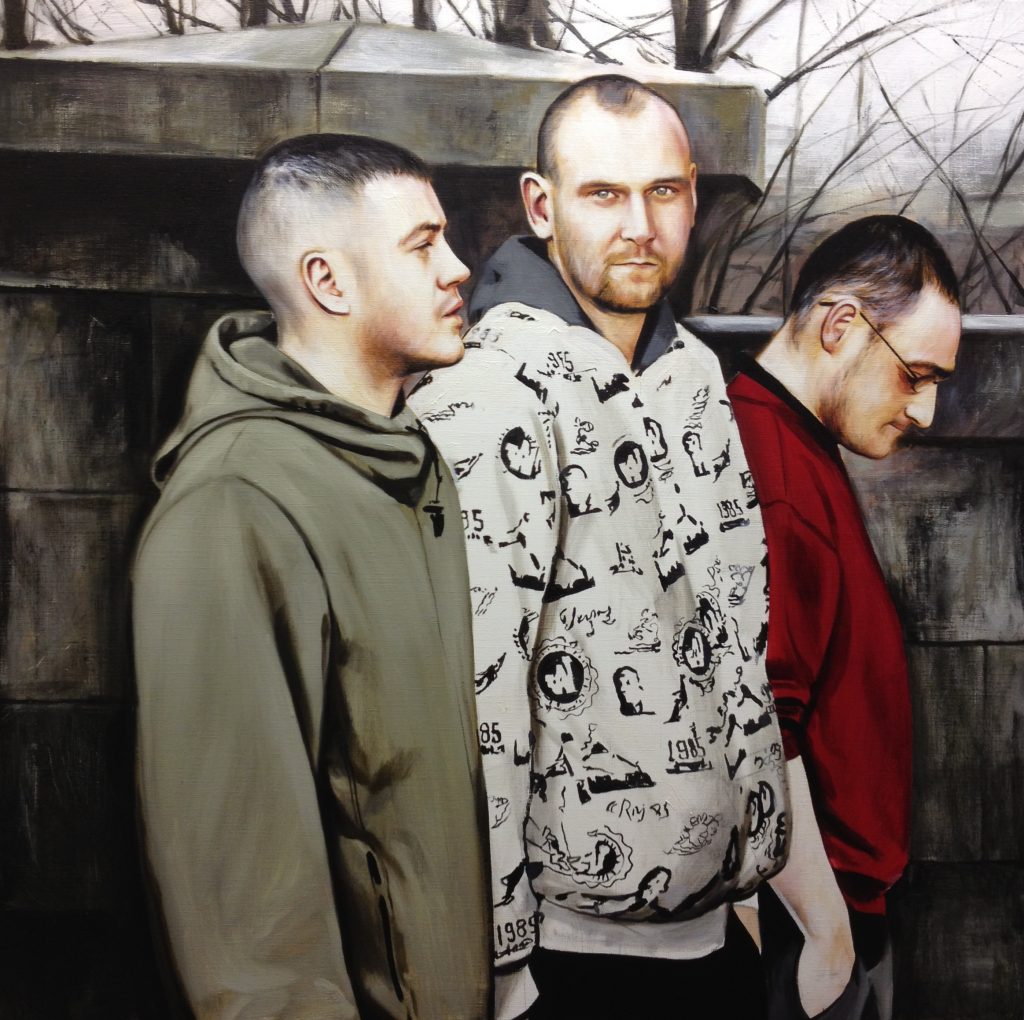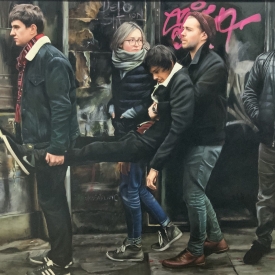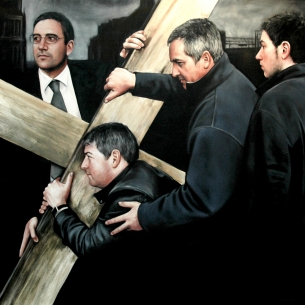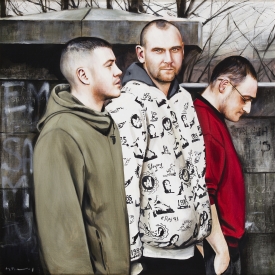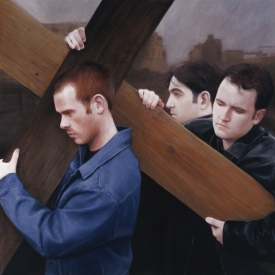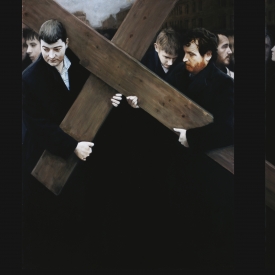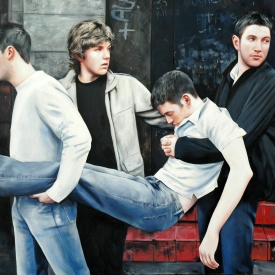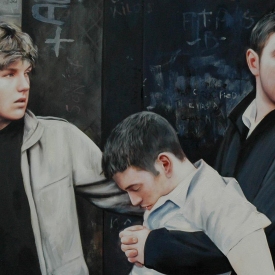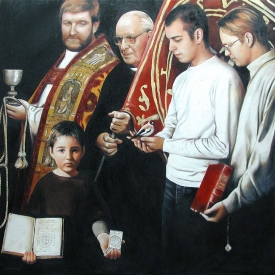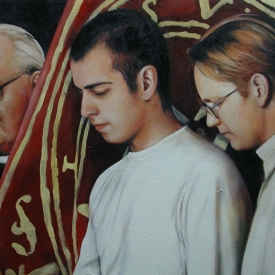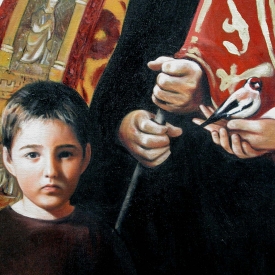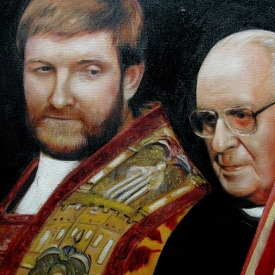Religious Works
The road to Emmaus
Three young men are walking away from an old city. Taking the title literary, we know that two of them are followers of Christ, leaving Jerusalem having failed to see anything of their risen Lord. And, in despond they are heading for Emmaus, a village seven miles further down the road.
The third, so the gospel account goes, is Christ himself, who has joined them without revealing his identity. Sensing their disillusionment and frustration from the fact that they could find no actual proof of the momentous events that had taken place in the city, he chastises them for their lack of faith. And, as they continue to walk and talk together, the young men gradually become reconciled, consoled by the gravity and wisdom of the stranger’s words. Eventually all is revealed and just as they recognise him he disappears, buttheir eyes have been opened and their former belief restored. They return, faith- renewed, to Jerusalem, and continue to spread the word.
That is the scriptural account, but Burns, by transferring the setting, weaves together past and present. This intermingling, even though for many the exact account is somewhat hazy, creates on canvas a powerful interaction between modern reality and somewhat latent memories of the symbolic significance of these ancient events. Once again, by adding additional layers of time and meaning, the artists has drawn on influences that lie somewhere just beneath our understanding, knowing that they continue to exert a powerful effect on our grasp of reality.
